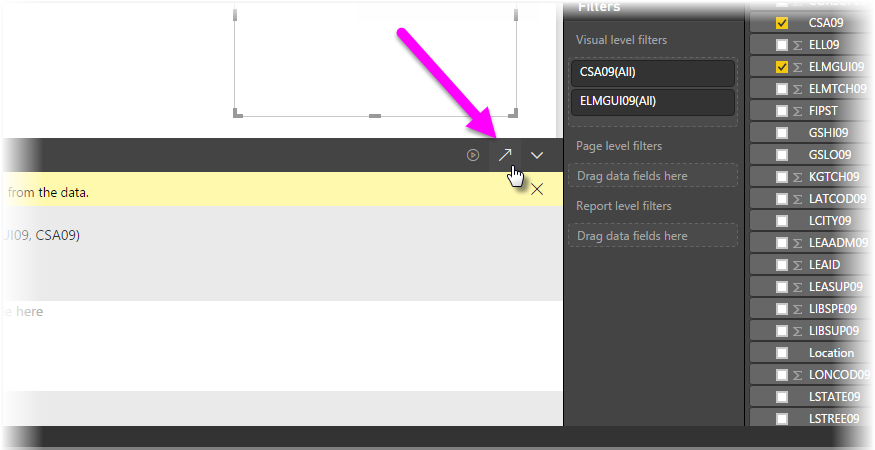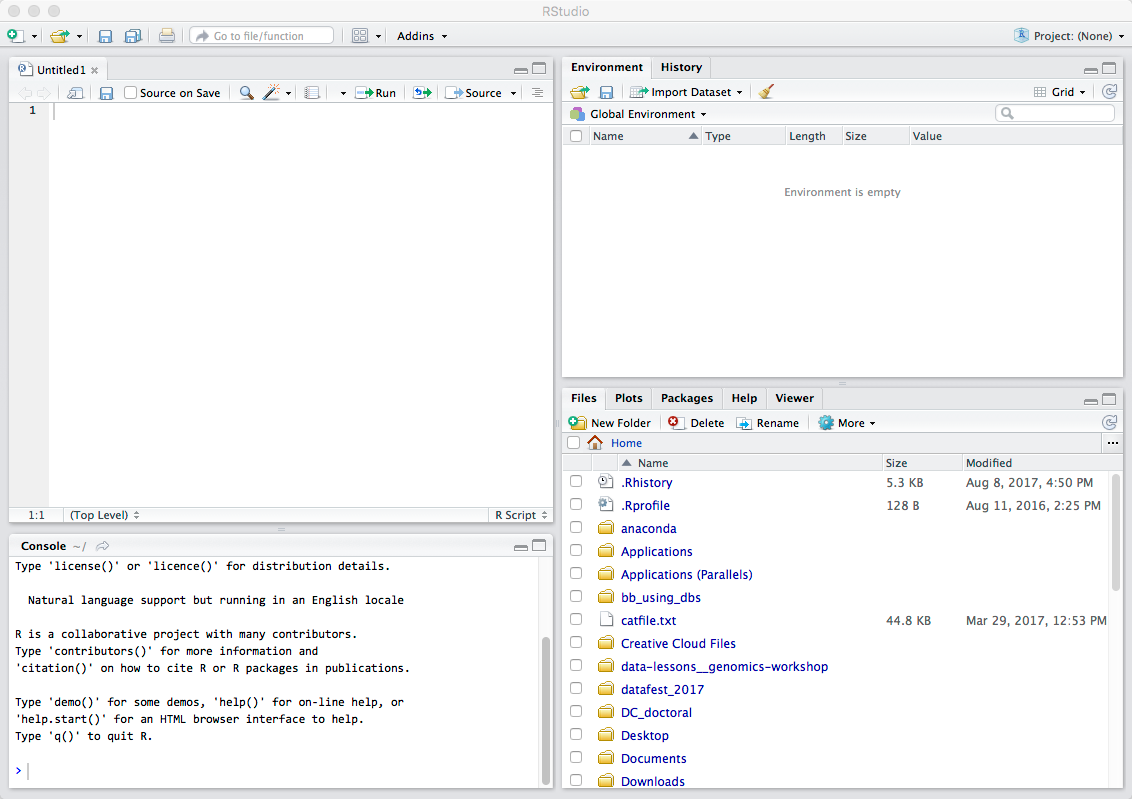

You should obtain a window like the one in the picture. We refer to the Interactive Job Session documentation if you need extra resources.Īnd we can execute RStudio with the command If you plan to use RStudio to run R scripts, you might want to allocate more memory and more CPUs than what is given by the default command above. NOTE: Above is a very simple use of 'srun' to obtain an interactive session, and will only provide default, minimal resources.
#IDE R STUDIO SOFTWARE#
Since RStudio requires GUI, we recommend using one of the software in our visual access (for example, X2Go or OnDemand desktop application) to obtain the best performance.įrom X2Go, open a terminal on the head node with GUI, then request an interactive session on a compute node. We can observe that the module for RStudio already loads the required dependencies, including R/3.3.3. This tells us that we need to be in the gcc/6.3.0 + openmpi/2.0.1. You will need to load all module(s) on any one of the lines below before the "rstudio/1.0.153" module is available to load. To know what modules need to be loaded in order to use RStudio, use A comprehensive list is available in the RStudio IDE Cheatsheet or follow on Twitter to learn a few tricks every week.In this example, we will try to load rstudio/1.0.153įirst, we need to make sure we are in the correct hierarchy. These are just a few of my favorite tricks. Want to dig into the innards of a function? With the cursor on a function press F2 to jump to the function definition, even for functions in a package. Hit tab in between two double quotes (” “) to open a file explorer. Tab complete can also help find files and remove the hassle of writing out long path locations. Many people know of RStudio’s rich set of tab complete options for functions and function arguments. Most people who use R also use RStudio because it provides a clean point-and-click dashboard of tools where you can type your code, view your figures, organize your data, variables, and files, as well as viewing the help window.
#IDE R STUDIO CODE#
In addition to a rich set of defaults, custom code snippets can also be created. By comparison, RStudio is a more versatile IDE, or Integrated Development Environment. Then hit Tab to replace the necessary components. For instance, type fun and then Tab to insert the skeleton code for a function definition. In R scripts sections are delimited by section comments (Try Code -> Insert Section).Ĭode snippets are a shortcut to insert common boilerplate code. In R Notebooks sections are delimited by the R Markdown headers. This feature works for R Notebooks and traditional R scripts. Save time scrolling with the code outline. The gallery can be expanded into a new satellite window for closer inspection. The plots can be viewed by toggling between thumbnails. The tool is context aware changing ’m’ to ‘m1’ won’t change ‘mtcars’ to ‘m1tcars’.Ī new feature built into R Notebooks, a code chunk that produces multiple plots will produce a gallery. This feature makes it easy to rename all instances of a variable. No more copy and paste from the console to a script! Commands can be written to the source pane or the console. The history pane shows a searchable list of commands that have been run. The command history will be filtered as code is typed into the console:


In the console it is possible to scroll through the command history by clicking Ctrl/Cmd and ↑. This feature allows users to tear off data view panes and source panes facilitating the use of multiple screens. Tearable panes are anything but terrible. In celebration of version 1.0 this post hopes to spread fanfare for a few of these easy-to-miss tools. During that same period, often hidden in the shadows, a growing list of smaller features has been changing lives. Many major features have been built: projects, package building tools, notebooks. The IDE has come a long way since the initial release 5 and a half years ago. The RStudio IDE reached version 1.0 this month.


 0 kommentar(er)
0 kommentar(er)
